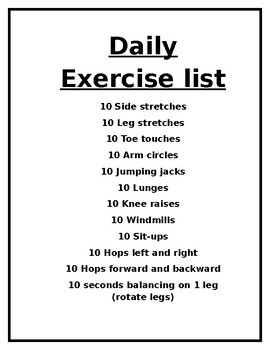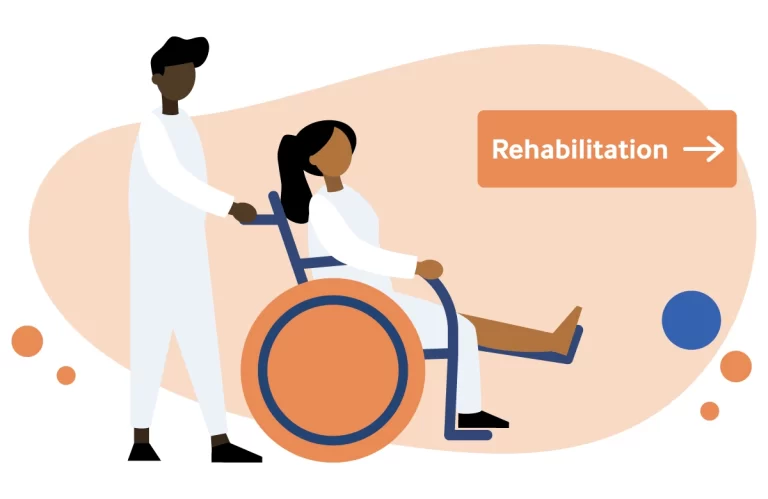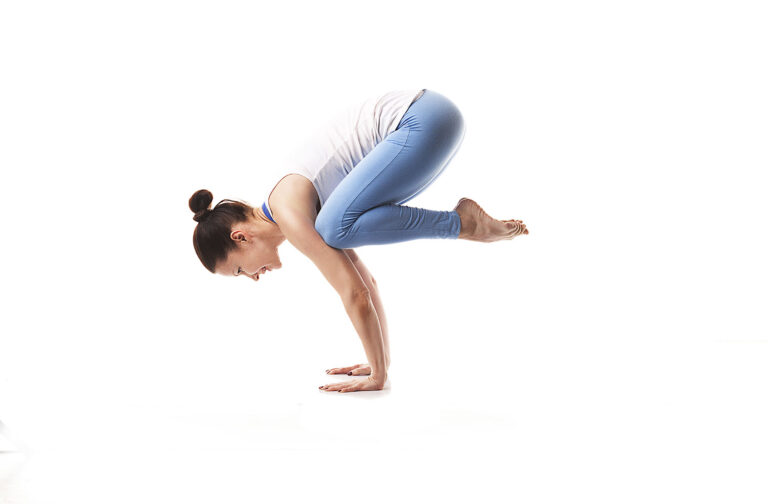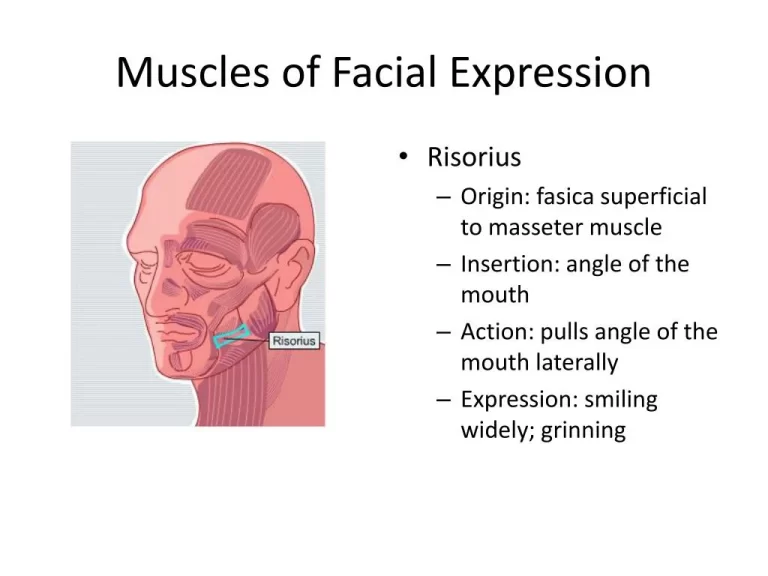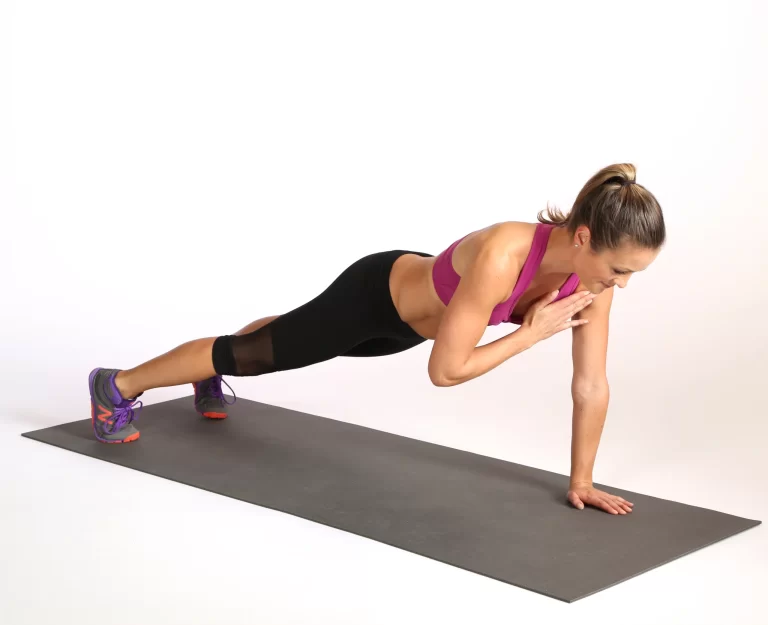15 Best Exercise for Sacroiliac Joint Pain
Exercise for sacroiliac joint pain is an important part of your overall treatment plan that helps to reduce pain, SI Joint stiffness, and improve the function of the SI Joint.
Living with sacroiliitis (SI) can be hurting and frustrating. It is an uncomfortable situation that occurs when the joint situated in your lower back (right where your pelvis connects with your spine) gets inflamed. If it beats you, you may feel pain in your buttocks and lower back, perhaps developing down your leg. It could get aggravated after prolonged periods of sitting, standing, or climbing stairs. Any amount of discomfort, from slight to severe, is something no one wants to experience, yet orthopedic experts deal with it all too frequently.
Multiple muscles connect to your pelvis and sacrum. If any of these muscles evolve overly tight, they can induce changes in your movement patterns. Your SI joint might consequently feel increased tension as a result.
Stretching the muscles around your SI joint can initially help you reduce tight areas. This may help reduce tension in your lower back and make it more comfortable to move around with less pain and discomfort.
You might want to speak with a physical therapist if you are dealing with persistent pain in your SI joint that does not appear to go better with gentle stretches. They may design a custom stretching and strengthening schedule to help you control your pain.
What are SI joints?
The SI joint called the sacroiliac joint connects the pelvis and lower spine. These two joints are made by the bony structure above the tailbone, called the sacrum, and the upper part of the pelvis, known as the ilium. The sacroiliac joints keep the weight of the upper limb when standing.
When you walk, run, or move about, your body can carry energy from your lower limb to your body through a variety of muscles and ligaments that support your SI joint. Additionally, your lower body’s muscles and ligaments absorb shock, which lessens the pressure on your spine.
Causes:
The sacroiliac joint is annoyingly prone to irritation over time, thanks to age, physical activity, and disease. It can crash due to a big number of causes, including:
- Car and two-wheeler accident, serious injury, or other physical trauma
- obesity (overweight)
- Pregnancy
- Repetitious stress
- Urinary tract infection
- osteoarthritis
- extreme exercise
- ankylosing spondylitis
- biomechanical issues like abnormal walking patterns
SI joint pain is also expected during pregnancy because your body delivers more of a specific hormone called relaxin. This hormone makes your joints additional elastic to allow your pelvis to enlarge during childbirth.
Despite the fact that pregnancy is a common reason for SI pain, in this situation, the pain is due to hypermobility, or “too much movement.” If a recent pregnancy is the cause of your pain, stretching might not be helpful.
Supporting the muscles in the groin, thighs, abdomen, and lower back can help lessen pain, improve mobility, and restore function to the sacroiliac (SI) joints. These muscles connect to the sacrum and hip bones.
Best exercises and stretches to relieve sacroiliac joint pain:
Lying Hip Adduction
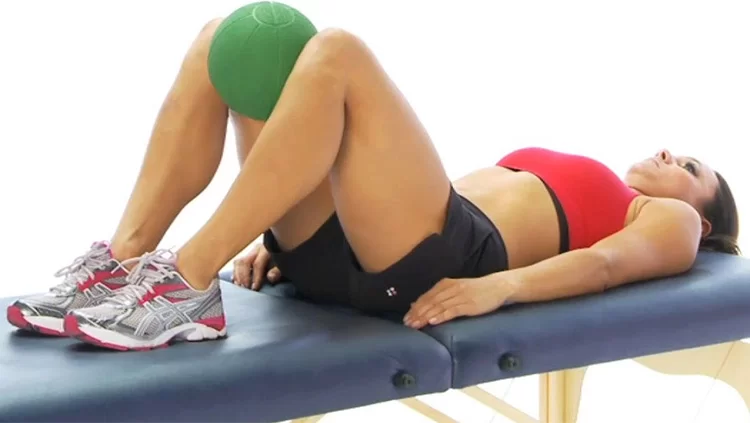
- To begin this exercise take a supine lying position with your knee flexed feet flat on the floor.
- Place a medium rubber exercise ball between the knees, about the size of a dodgeball.
- Press the ball with both knees for ten seconds, and then relax.
- Repeat this exercise ten times to support the hip adductors and lower abdominal muscles.
Lying Hip Abduction (Resistance Band)
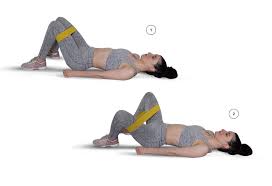
- The first step in the lying hip abduction exercise with a resistance band is to lie on your back on a soft surface with your knees bent and your feet flat on the floor.
- Put a resistance band around the thighs, just above the knees, and contract the core and buttock muscles.
- To produce tension in the band, put the knees with the feet slightly apart. Then, gradually pull the legs apart as tolerated.
- You have to complete three sets of ten repetitions. Adjust the resistance by utilizing a different band or moving it higher up the thighs.
Bridge Pose

- To do the bridge pose, start by lying on the back with both knees flexed and feet flat on the floor.
- Put the arms flat on the side of the body with palms facing down.
- Breathe in, and slowly raise the hips while contracting the abdominal and buttock muscles.
- Raise the hips as much as possible, without pain, to make a straight line from the shoulder to the knee.
- Hold for 5 seconds, then release. Complete 2 sets of ten repetitions.
Bird-Dog Pose
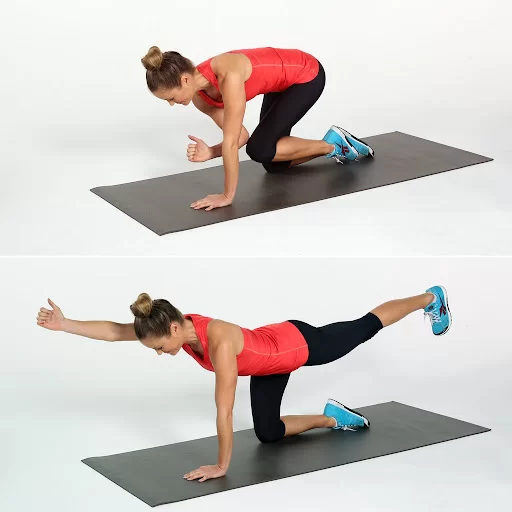
- To start the bird dog exercise you have to come on four limbs with arms and legs shoulder-width apart in the quadruped position.
- Extend the left leg outward with a straight back and toes pointing away from the body.
- At the same time extend the right arm out in front of the body.
- Start holding the stretch for five seconds, then gradually increase it to thirty.
- Do this with the opposite arm and leg.
- The objective is to finish one set of three stretches on each side.
Sitting Hip Adductor Stretch
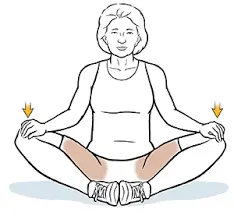
- To begin this exercise, sit on a mat or chair with your legs out in front of you.
- put wide the legs outward slightly and extend the feet straight out, with the toes pointing up towards the sky.
- Lean on slightly from the hips, keeping the spine straight. Hold the stretch for 30 seconds and then slowly return to the initial position.
- Complete 1 set of 3 repetitions.
Seated Hamstring Stretch
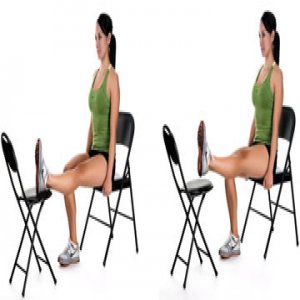
- Sit on the edge of a chair to begin this stretch.
- Put the right leg on the floor for support and extend the left leg out in front of you.
- Sit up tall and reach both arms towards the sky, lengthening the spine.
- Breathe out and hinge forward, reaching the left hand towards the left foot. A stretch should be felt at the back of your left thigh.
- Hold the stretch for 20 seconds initially and work up to thirty seconds. complete 1 set 3 stretches on both sides.
Quadricep Stretch

- To start this exercise standing quadricep stretch, start by standing tall with the feet hip-width apart.
- By shifting your weight to your right foot and grabbing the ankle with your left hand, you can pull your right foot’s heel closer to your buttocks.
- Keep the knees close together and stand straight without swaying forward or backward.
- To help with balance, it could be beneficial to grip onto a chair or a wall with the left hand. Hold the stretch for 20–30 seconds before resuming the stretch carefully. Complete 2 sets of 3 repetitions.
Press-Up
- As you start this exercise, lie on your stomach.
- Untuck your toes, flex your elbows, press your palms on the floor, and keep the body in a straight line from the head to the heels.
- slowly push back by straightening your arms. Make sure the pelvis is in contact with the ground.
- Hold this position for five seconds.
- Do this exercise for 10 to 12 repetitions, keeping your actions controlled and smooth. Make an effort to finish three sets of 10–12 repetitions.
- A deviation of this exercise is to keep the elbows slightly bent during the press-up if opening the arms fully induces discomfort.
Single knee-to-chest stretch

- To complete single knee-to-chest activities. Laying flat on your back with your legs straight is a good place to start.
- Flex the left knee, pulling it up to the chest.
- Maintain the knee with both hands for ten seconds.
- Repeat the stretch on the opposing leg.
- Hold this stretch for 8 to 10 seconds originally and work towards 20 to 25 seconds. Aim to complete one set of 3 stretches on each side.
- Other stretches may be advised by a doctor, physical therapist, or other health professional as part of an individualized training or physical therapy schedule.
Figure 4 Stretch
- Figure four is an excellent way to target multiple muscle groups at the same time. You will likely feel this stretch, especially in your outer hip and glutes. You can utilize a strap or band if you are having trouble reaching your knee.
- Lay with face-up on a mat with your feet in front of you.
- Lift your right leg so that your hips and knee are both at roughly 90 degrees.
- Put your left ankle just above your right knee.
- Smoothly pull your right leg toward your chest until you feel a stretch.
- Keep for up to a minute and repeat on the right side.
Trunk rotation stretch
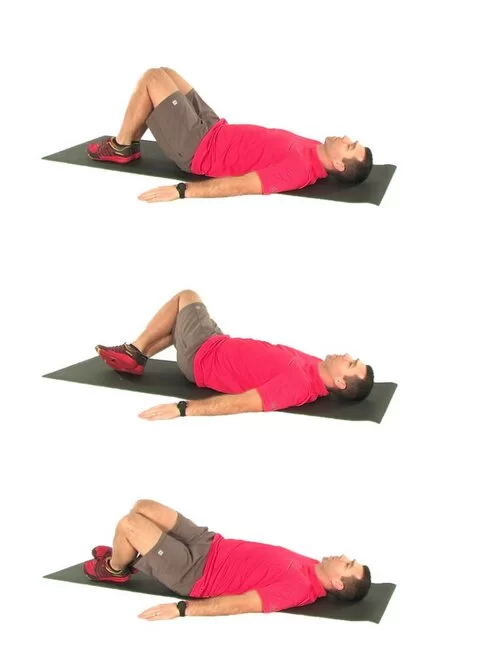
- This exercise helps to stretch the muscles located on the sides of your body. When finishing this stretch, only twist as much as you can comfortably. Stop instantly if it hurts your lower back.
- Lie on the floor with your feet flat on the ground and your arms outstretched in a T-position. Your knees should be jointly pointed toward the roof.
- Hold your knees together and twist to one side as much as you comfortably can.
- Switch to the opposite side and do ten twists on both sides.
Double Knees-to-chest stretch

- This exercise may assist ease SI joint pain by relieving tension in your lower back, hamstrings, and hips. Like with the stretch above, you can attempt to hook a strap behind your knees if you are having trouble reaching your knees.
- Take a supine lying position with both knees flexed and grab your knees with both hands. now, pull your knee towards your chest.
- Hold for 10 seconds then gradually come back to the original position.
- Complete 2 sets of ten repetitions.
Cat-Cow
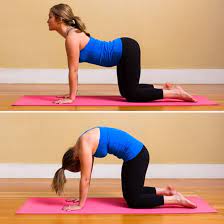
- The exercise is commonly known as a s cat-camel pose in yoga. It can be used to warm up. You might also use it to strengthen and stretch the muscles in your back, hips, and abdomen.
- This exercise places pressure on your knees, so you may want to ignore it if you have knee pain or any kind of knee damage.
- Begin on your hands and knees with your chin up, your back flat, and your eyes forward.
- Gradually arch your back up as you draw your chin towards your chest. maintain for two to five seconds.
- As you arch your back downward, slowly detach your chin from your chest and bring your eyes forward. maintain for three to five seconds.
- Do these steps 8 to 12 times. Stop the workout and lie on your back for a rest if you have any pain or weakness in your SI joint, hips, or knees.
Triangle Pose

- The triangle pose is another great stretch-strengthening activity that anyone, no matter how flexible they are, can benefit from.
- This activity helps stabilize your SI joint by supporting your core, lower back, hips, and thighs all at once.
- Begin by standing with your feet just wider than hip-width apart and your arms by your side.
- Straighten your left arm towards the roof.
- Slowly twist at the waist and bring your right hand towards your left ankle. Go forward if you can reach your ankle. If not, reach for your calf or knee.
- Return to standing by raising your body straight again.
- Alternate sides by reaching your left arm towards your right ankle.
- If you have any pain or weakness in your SI joint or knees, repeat this five times.
Low-Impact Aerobics
The American Heart Association suggests fitting in 140 minutes of moderately intense aerobic exercise each week. That is a great plan to work up to. But for SI joint pain, aerobic exercise is the way to go. Go at your own pace. Although the point is to raise your heart rate, you do not require to work out with the same power as you might to lose weight. Stay concentrating on your pain and only permit yourself to activity at a level you find comfortable.
Aerobic exercises you can efficiently adjust to your pace and pain level include:

- Walking: This is the easiest way to increase your heart rate either by yourself or with a friend.
- Water aerobics: This is one of the best low-impact exercises for people with chronic pain. If swimming does not work for you, try walking in the pool or wading while holding onto a raft.
- Stationary cycling: If you do not have a static bike at home, think about joining a class. Go at your own pace, and do not feel pressured to keep up with those around you.
- Tai chi: This gentle exercise utilizes gradually, controlled exercises and relaxation techniques that stretch, strengthen, and get your blood flowing.
Sacroiliac joint pain exercises to avoid:
Some sports and activities can aggravate sacroiliac joint pain. If you suffer from sacroiliitis, Try to limit or refrain from these activities if you have sacroiliitis:
- curl-ups
- Abdominal crunches
- Golf
- Tennis
- Weightlifting
- Football
- Basketball
- Biking for extended periods
Precautions and safety:
The following routines may potentially help lessen or prevent pain in the SI joint in addition to routine stretching.
- Limit prolonged sitting. prolonged sitting can induce tightness and stiffness in your back which, in turn, can exacerbate SI joint pain. Attempt to get up and move around, stretch, or take a short walk at least once every 40-60 minutes.
- Change your sitting position. The most useful way to sit with SI joint pain is by holding your hips level with each other and your sit bones in contact with your chair. This can control the pushing of the ligaments around your SI joint. Hold your knees slightly apart and evade crossing your legs. Many times, it may be more relaxed for the SI joint if your hips are above your knees to hold the normal curve in your back.
- Strengthen your glutes. According to the study, those who have weak glutes and persistent pain in their SI joints may benefit from glute strengthening.
- Alternate heat and cold. Try rotating heat and ice for 15 to 20 minutes at a time to help control pain and stimulate blood flow.
- If your discomfort doesn’t go away, consult a physical therapist. A physical therapist can create a custom schedule to allow you to manage your SI joint pain.
FAQs
Which activities may worsen SI joint pain?
Standing movements like shifting weight on your hips, such as leg lunges, and other motions where just one foot is on the ground at a time. Avoid using cardio equipment like stair climbers and treadmills, as well as high-impact workouts like jogging or jump-roping.
Is swimming a useful training for SI joint pain?
It depends on light and comfortable swimming strokes are useful. Some strokes, like the breaststroke and butterfly, may cause your sacrum to rub for others. If you find that swimming is causing your pain, try the backstroke rather, or stick to walking through the water.
How does SI joint pain feel like?
SI joint pain feels to be centered in the lower back, groin, hips, or tailbone. While some people experience aching, dull discomfort, others have searing, intense pain that extends into their thigh, knee, or foot.
What generates SI joint pain?
Acute SI joint pain can be induced by an accident or injury. A major cause of chronic SI pain includes aging, arthritis, long-term disease, poor posture, and misuse.
What are the risk elements for SI joint aches?
SI joint pain is additional typical in women than in men. Age (over 40), pregnancy, overweight/obesity, prior back damage, prolonged sitting, exerting more than four times a week, and having a job that needs lifting, bending, or heavy labor are also risk factors.
Which other symptoms appear with SI joint instability?
Besides pain, signs of SI joint instability include:7
Numbness or tingling
Weakness
Leg instability
Trouble sleeping due to pain and discomfort
Trouble seating for extended periods
Pain when standing from a seated position
What do the SI joints associate with?
The SI joints connect the top of the pelvis (iliac) and the bony structure outside the tailbone (sacrum).


